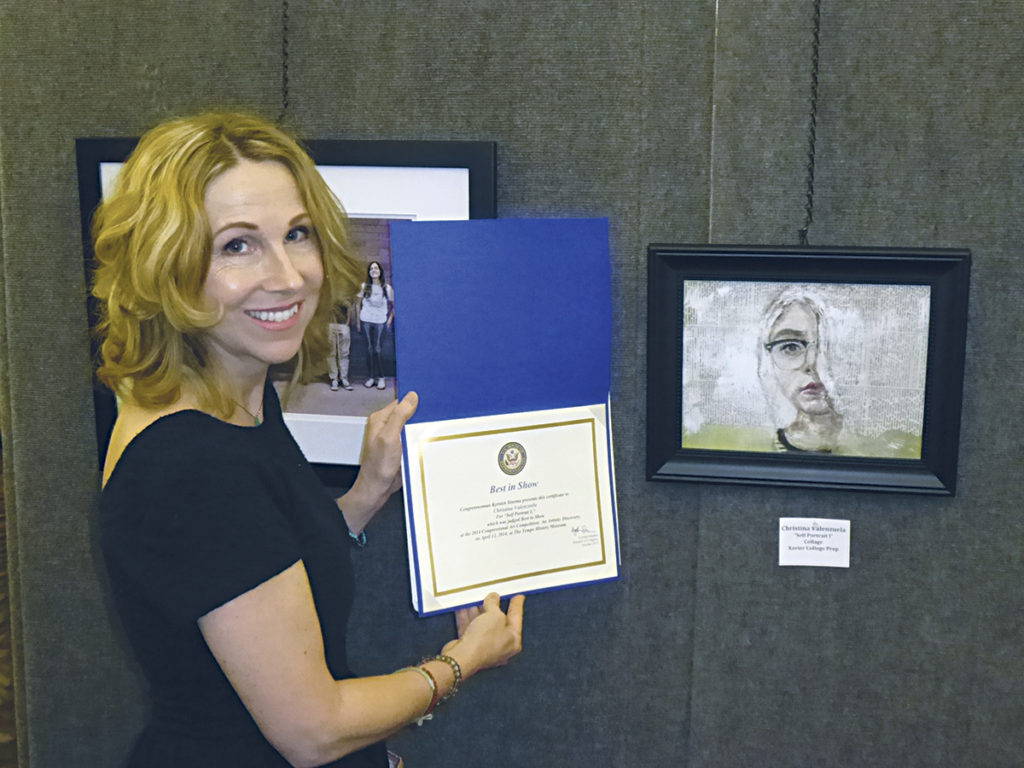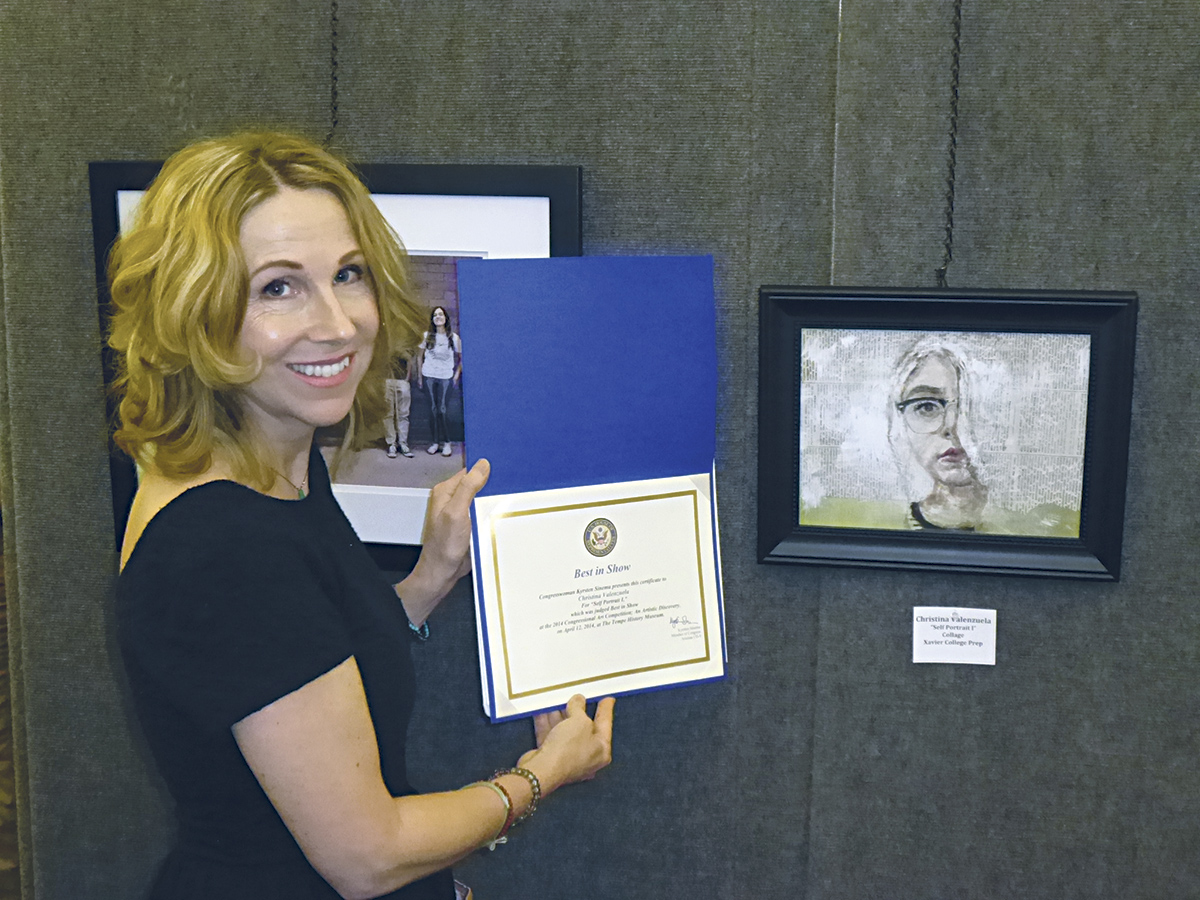
School is officially out for the summer, but a high school art teacher still has plenty of young minds to inspire.
Alison Dunn, an art teacher four times over at Xavier College Preparatory, will be the keynote speaker at the Congressional Art Competition in Washington, D.C. June 23. Dunn’s other titles include department co-chair and co-curator of the school’s Stark Gallery, neither of which led to the invitation, she said.
“It’s really the work of my students that got us recognized,” Dunn shared, shortly after proctoring final exams.
The speaking engagement is a result of past student performance at the competition’s district level and at the invitation of the Arizona congresswoman hosting the national reception. Xavier has participated in the competition’s district level the last three years with four awards this year, 11 in 2015 and honors including a “Best of Show” its rookie year.
Pieces dubbed “Best of Show” move on to the national competition and remain on exhibit in Cannon Hall at the U.S. Capitol for one year. Dunn said she always encourages show participation, but it can be hard to motivate her students each spring. Many think their pieces aren’t worthy.
Even the piece Christina Valenzuela entered that ultimately won “Best of Show” at district level in 2014, was at first one of those “You think I should put that in the show?” moments. Dunn is all for encouraging her students to take risks, albeit safer ones than her rookie venture at the age of 5. To enhance a portrait, the future master of humanities who spent 15 years as a college art lecturer, cut her own hair and glued it to the piece.
“I thought it was groundbreaking,” Dunn confessed. Her mom disagreed. “These are the typical roadblocks artists run up against.”
Dunn planned to re-create that portrait as an artistic part of her keynote address. This time, she used a professional stylist for the haircut.
As for words she hoped to impart, Dunn wanted the nation’s top high school artists to remember that art is a legitimate field of study and it is possible to make a living of it. Dunn remembers the moment she realized that. She froze in the middle of an art history lecture on Matisee’s “The Blue Nude.”
“I was overcome with this realization that I needed to be making paintings and not defending someone else’s paintings,” Dunn said.
Other typical student questions: What if no one likes what the artist makes? How can a person be more creative? To that, Dunn advises living modestly.
“It causes me to be more creative when I have to fix the things that are broken instead of buying a new one,” she said.
[quote_box_right]Dunn’s portfolio[/quote_box_right]
Such a lifestyle led to resourcefulness too. Dunn was able to use house paint instead of costlier acrylic. Being aware of ingredients and knowing the material world and natural world well can bode well for an artist. Dunn has blended everything from ashes of burnt up material to pomegranate seeds and cherry stems into her oil paintings.
It may not be part of her keynote address, but Dunn often tells Xavier students to fail as much as they can — to make bad art.
“Because then, in their efforts to make something deliberately bad, they’ll be asking themselves why this is something deliberately bad,” Dunn said. “It will help them ultimately think the best of people and be more perceptive about much of their own art.”






